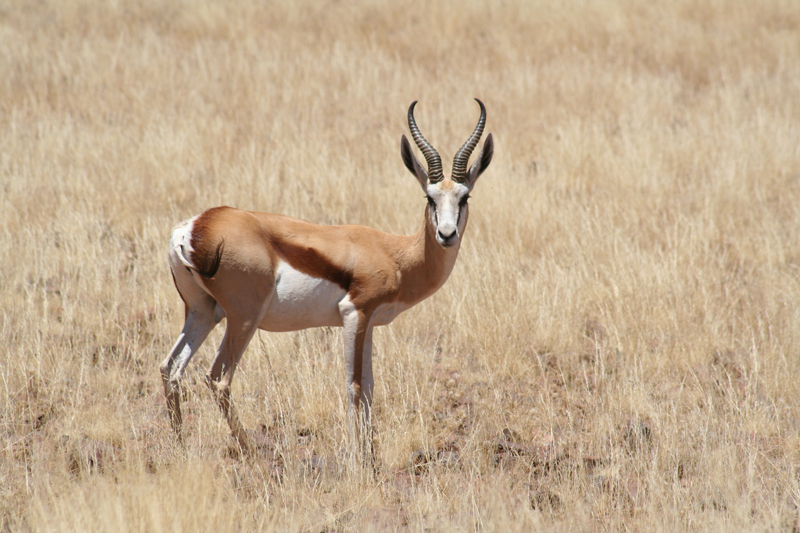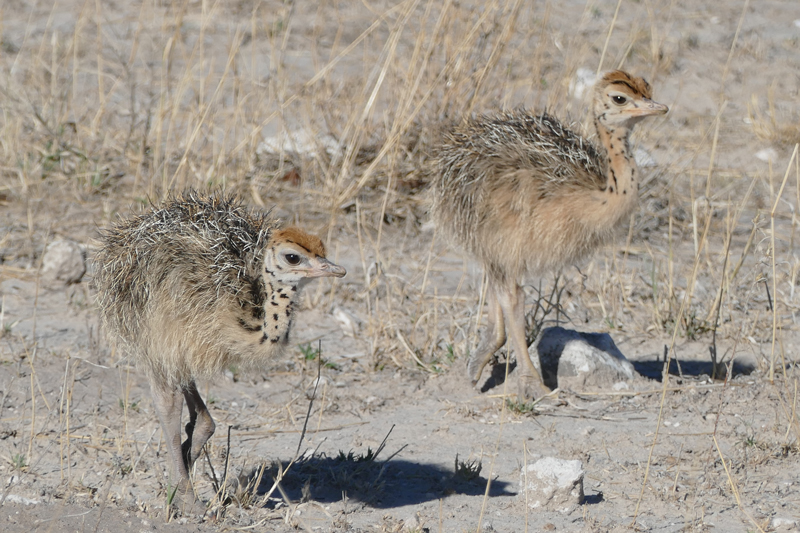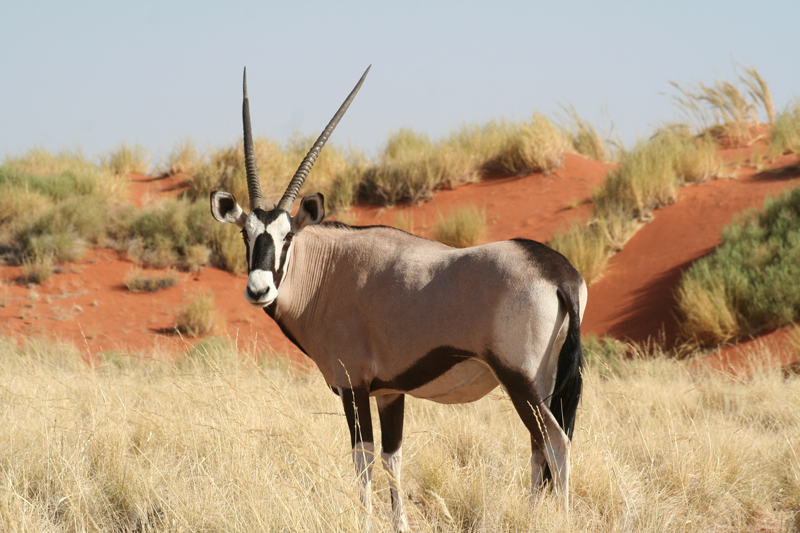Namibia Wildlife Highlights
Namibia is predominantly a desert country and the range of wildlife that can be seen throughout much of the country reflects this.
Species best adapted to the desert conditions include oryx, springbok, ostrich, bat-eared fox, black-backed jackal, meerkat and Hartmann’s mountain zebra. Nocturnal species (only likely to be seen on night drives) can include shy creatures such as Brown hyaena, Cape fox, aardvark, aardwolf and caracal.
In the north-west of the country, in particular northern Damaraland and southern Kaokoland, desert elephant and desert rhino survive in surprisingly harsh conditions. Rhino are more limited in their range but ongoing conservation efforts are continually extending their protected habitat. It is possible to track black rhino on foot, a rewarding and potentially thrilling experience.
Key predators include lion, leopard and cheetah, though outside of the protected big game regions such as Etosha National Park, predator populations are relatively sparse. Cheetah and leopard do actually roam throughout the country, often coming into conflict with local farmers. For an interesting predator-based experience, Okonjima in the Waterberg region is home to the Africat Foundation and offers various predator orientated activities.



Along the coast, Cape fur seals can be seen in large numbers, with the seal colonies at Pelican Point (Walvis Bay) and Cape Cross being particularly accessible. Heavyside dolphins can be seen on boat cruises from Walvis Bay. Sighting brown hyaena would be a major highlight along the any stretch of the coastline, though they can be seen from a couple of exclusive properties in the Skeleton Coast National Park, and also in the Erindi Game Reserve.
In Etosha National Park, a wide range of wildlife can be enjoyed. In particular, the floodlit waterhole at Okaukuejo Restcamp is very productive in the evenings, with many rhino visiting to drink in the dry season. Lion will also use the waterhole as an ‘ambush point’ during the height of the dry season when game has little choice but to drink there. The elephant are particularly large, and Etosha is also home to the rare black-faced Impala.
Meerkats exist throughout much of Namibia, but are not prolific and are very difficult to get close to. Bagatelle Kalahari Game Ranch, near Mariental, has a habituated family which is arguably the best option for seeing them in Namibia.
The Caprivi region is much less arid, with several great rivers bringing a vast amount of water through the region, and this is the best part of Namibia to see more aquatic species such as hippo and crocodile, and wildlife that relies more heavily on water, such as buffalo. Wild dogs can also be seen in this region.
The varied habitats of Namibia make for very interesting birding. There are a number of sought after endemics, including Hartlaubs francolin, Ruppels parrot, Herero chat, dune lark and rock jumper. In Etosha, there is a vagrant blue crane population. The different regions offer very specific and individual birding opportunities.


